The celebrated Mr. K pays tribute to one of his cinematic heroes…

By PAUL KUPPERBERG
Here’s how I opened last year’s column celebrating Jerry Lewis’ birthday:
Don’t get me started on Jerry Lewis!
If I had to choose one performer who had any sort of influence on my life, it would be Jerry Lewis (March 16, 1926–August 20, 2017). And doesn’t that just tell you s**tloads about me!
I was born the year Dean Martin and Jerry Lewis, the most successful comedy duo in history, broke up, and by the time I became aware of such things, their movies were showing up regularly on television and Jerry had already embarked on his successful solo film career. I was 8 years old when I saw The Nutty Professor (1963) and I was hooked for life. (And yes, I do recognize that Jerry was often on the wrong side of controversy, but the 9-year-old in me will forever love him for the comfort and laughter he brought into my often-unhappy childhood.)
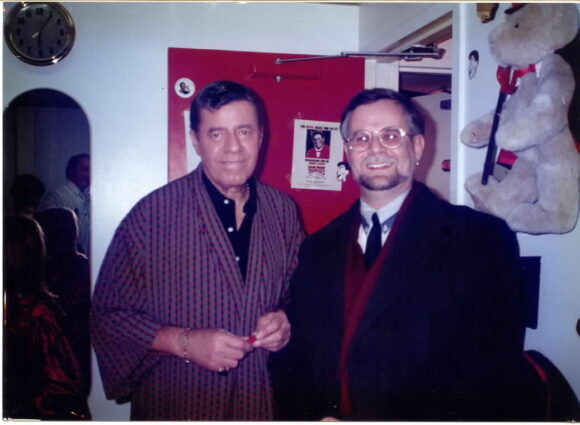
I recycle this because I can’t think of a better way to express what Jerry means to me. Star of screen (big and small), radio, print, comic books, telethon, and stage, my favorite “Jerry” was and will always be “Movie Jerry,” both in partnership with Dean and on his own. He was a manic ego with an unrestrained id, a comedy machine firing so fast that his frequent misses were more often than not compensated for by his just as frequent comedic bullseyes.
As much as his (and Dean’s) talents were often wasted by Hal Wallis and Paramount Pictures’ banal studio comedy sensibilities, Jerry’s explosive energy of the late-1940s and early-1950s couldn’t be restrained, not in Technicolor on the big screen or even in grainy black and white on the small screen.
(For the uninitiated, here’s some 1954 Colgate Comedy Hour starring Martin and Lewis:)
In the mid-1960s Jerry tried transitioning to more “adult” roles in movies like Boeing, Boeing (1965), Three on a Couch (1966), and Don’t Raise the Bridge, Lower the Water (1968). Instead of his sugar-rush-crazed, nine-year-old character, he started playing grown-up sophisticated roles that relied more on verbal humor than slapstick and sight gags, although being Jerry, he never could let those go: Hook, Line, and Sinker (1969) ends with protagonist and flashback narrator Peter (Jerry) Ingersoll revealed to be impaled by a massive swordfish that doctors are standing by to remove.
There are, to be sure, a lot of stinkers in the Jerry Lewis oeuvre. Some later efforts are, in fact, an effort to watch, particularly Hardly Working (1980), Slapstick of Another Kind (1982), and Cracking Up (1983); the less said about The Day the Clown Cried (1972) the better.
By the same token, he had his triumphs, especially when he put himself in the hands of other directors. His roles in Martin Scorsese’s The King of Comedy (1982), Peter Chelsom’s Funny Bones (1995), and the cranky old man in Daniel Noah’s Max Rose (2016) are all worth a look. As much as I admired his chops, though, I never really understood his power as a performer until I saw him live as the devil Applegate in the 1994 revival of Damn Yankees on Broadway. He owned the stage whenever he was on it, but never more so than during his Act Two solo, “Those Were the Good Old Days.” (I got this Dell Comics adaptation of another of his movies, 1959’s Don’t Give Up the Ship, signed when I went backstage after the show.)
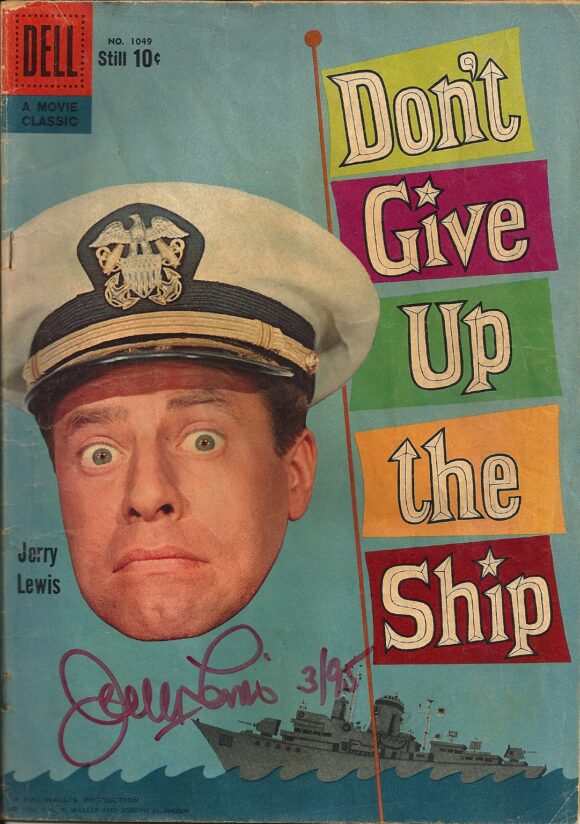
Here then, MY 13 FAVORITE JERRY LEWIS MOVIES (INCLUDING ONE TV SHOW):
—
My Friend Irma (Paramount, 1949). Their first film and the prototype of almost every Martin and Lewis movie to come: the handsome crooner and his goofy monkey of a sidekick, a “quest” of some sort (usually to break into show business), and romantic entanglements. The film was based on a successful radio program that didn’t contain a part for Jerry’s particular skillset, so the role of “Seymour” was created for it and the sequel, My Friend Irma Goes West (1950). But, y’know, the sequels are rarely as good as the original…
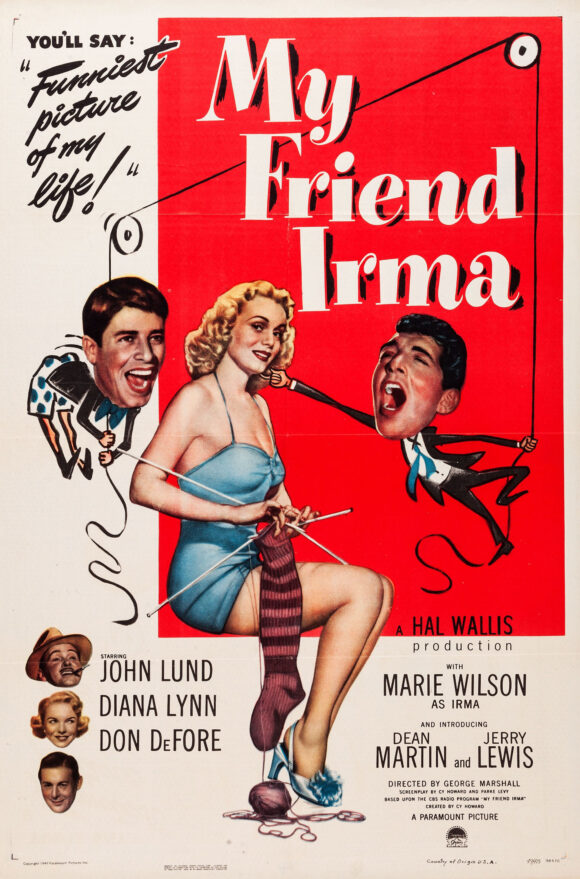
—
That’s My Boy (Paramount, 1951). A sweet comedy featuring Jerry as the nerdy son of one-time college football star (played by the great Eddie Mayehoff, who was only eight years older than Jerry) who wants nothing more than for his son to follow in his gridiron footsteps, with Dean as the star athlete Eddie hires to coach his boy.
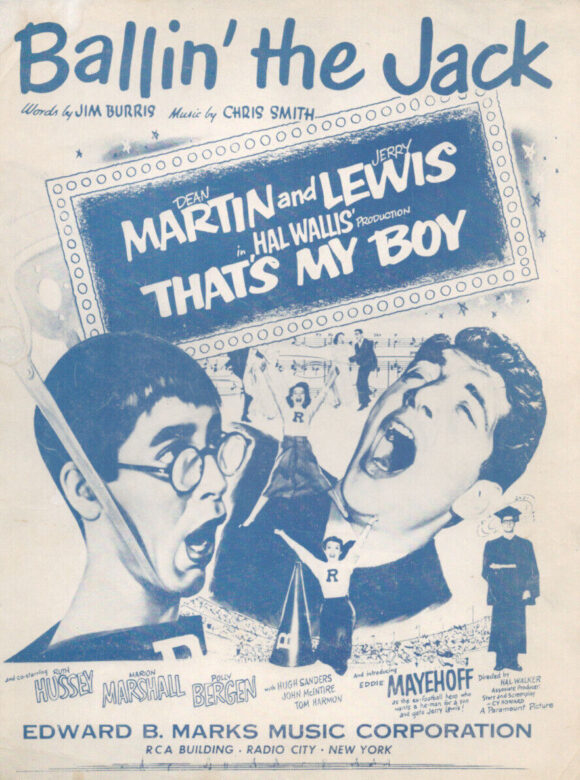
—
Living It Up (Paramount, 1954). This remake of Living It Up directed by Norman Taurog casts Jerry as Homer, the boy mistakenly diagnosed with only three weeks to live and Dean as his best pal and doctor who makes this mistaken diagnosis. Sassy newspaper reporter Janet Leigh’s story about Homer makes him a celebrity and, of course, hilarity ensues.
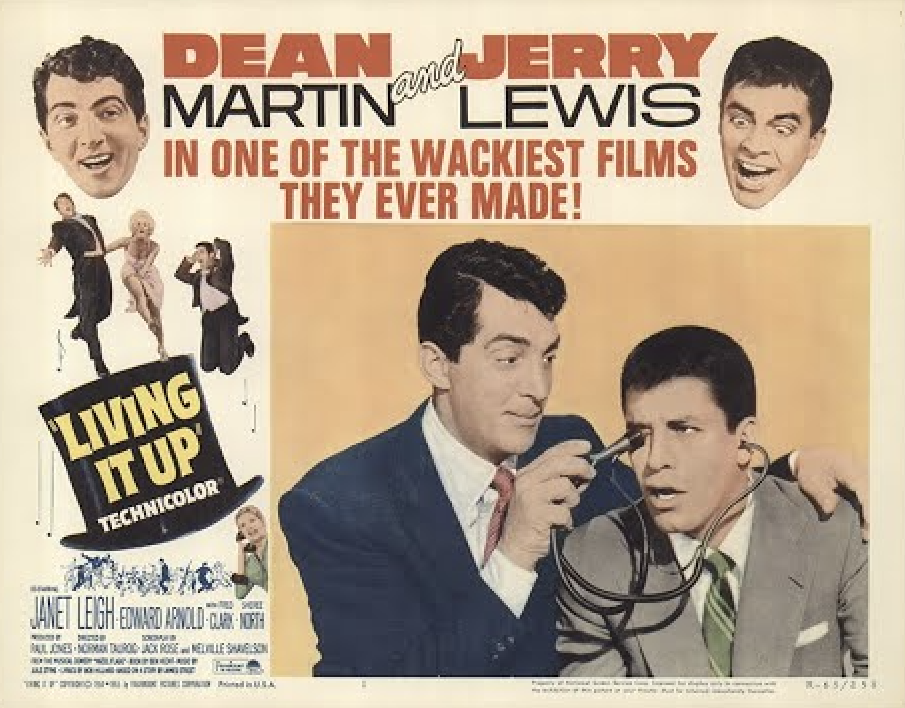
—
Artists and Models (Paramount, 1955). Jerry not only starred in a comic book he co-starred in a movie about comic books! Martin and Lewis’s third to last film together is also their best, featuring the buddies let loose in a story that features them as comic book creators in the time of Frederic Wertham. Also, Shirley MacLaine in the “Bat Lady” costume and a great closing production number!
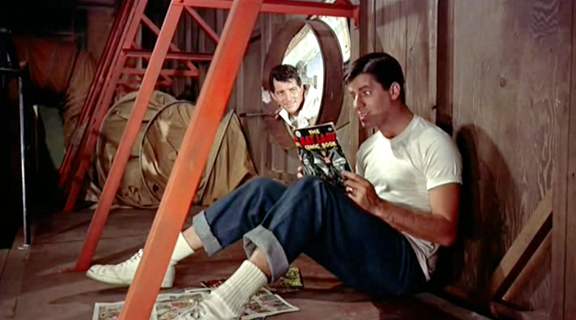
—
The Bellboy (Paramount, 1960). It took Jerry several films and a few years after the 1955 breakup of Martin and Lewis to find his filmatic footing again, but he finally made a solid landing with The Bellboy. Produced, written, and directed by Jerry, it was famously shot in a month’s time during the day at Miami’s Fontainebleau Hotel, where Jerry was performing at night.
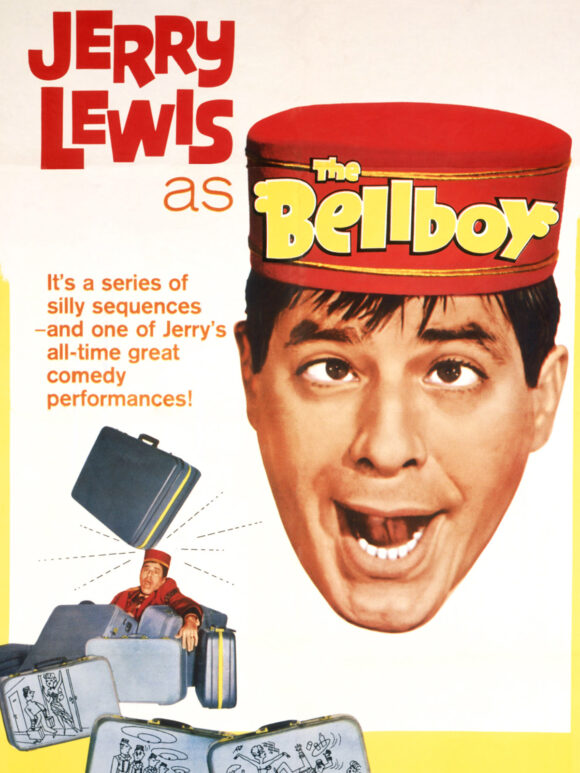
—
Cinderfella (Paramount, 1960). The reason The Bellboy was filmed in such haste was because Jerry wanted the Frank Tashlin-directed Cinderfella to be released at Christmas but Paramount Pictures needed it for its summer schedule. So faster than you can say Anna Maria Alberghetti, Jerry whipped up The Bellboy as a replacement flick. Fine art note: The film’s poster (a framed copy of which I own) was painted by Norman Rockwell.
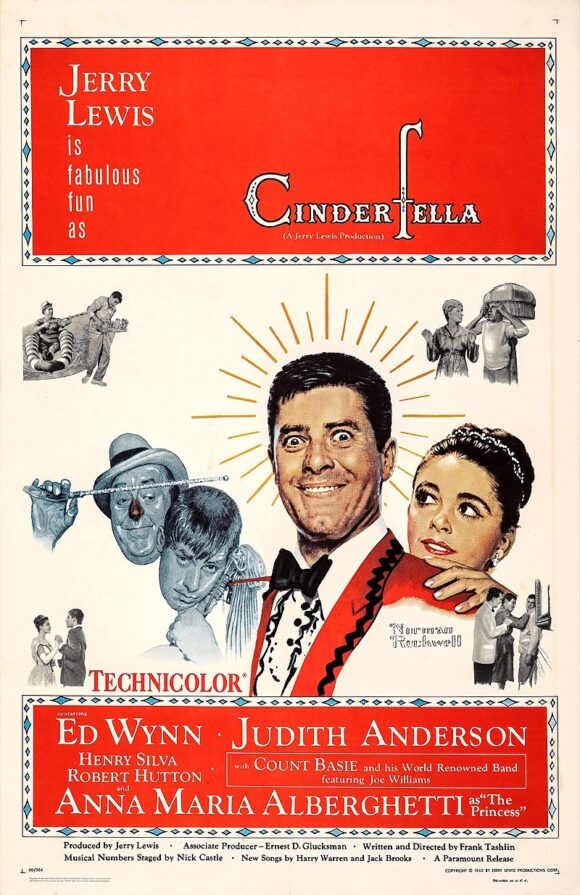
—
The Ladies Man (Paramount, 1961). The movie that proved what a Big Macher Jerry Lewis had become! The success of his previous films gave Jerry some muscle with the studio, which is how he got them to build a $500,000 (over $5,000,000 in today’s dollars), 36-foot high, four-story boarding house interior “dollhouse” and courtyard that Jerry the director shot with crane-mounted cameras. Not a great film — hardly a good one — it is significant in that it’s the feature on which Jerry first started using so-called “video assist” technology, i.e., the simultaneous videotaping of what the film camera sees, allowing for more than one person to see the shot and for a self-directing actor to judge his own performance in a scene. Also, it features a character named “Mrs. Wellenmellon.”
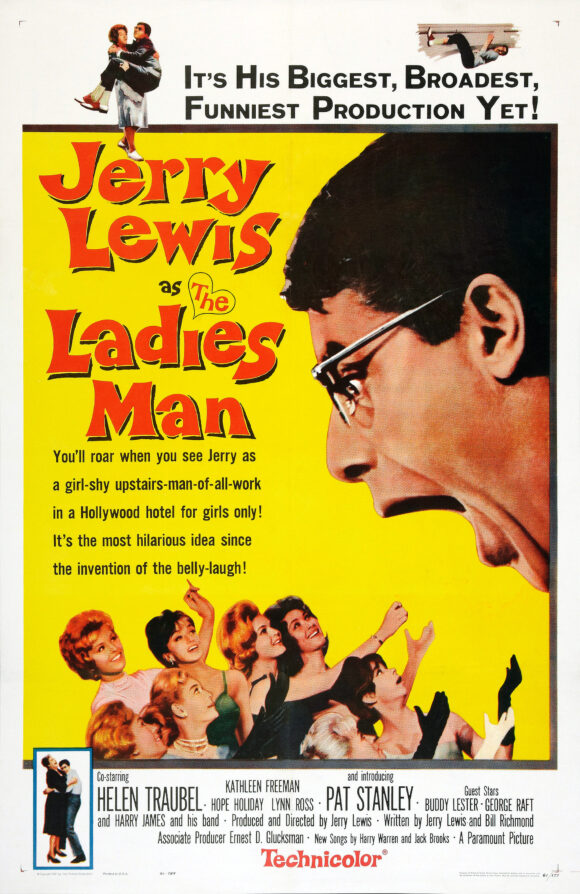
—
The Nutty Professor (Paramount, 1963). All respect to Eddie Murphy, but there can be only one Julius Kelp: the original. Whether monstrous hipster Buddy Love is a rip at ex-partner Dean or a subconscious reflection of his own inner self, The Nutty Professor (co-written with Bill Richmond and directed by Jerry) is Jerry’s most fully realized film, satisfying for viewers of all ages. It co-stars Stella Stevens and a scrapbook of regular Lewis players, including Kathleen Freeman, Del Moore, Milton Frome, and Buddy Lester. It’s on the American Film Institute’s 100 Years…100 Laughs list and was inducted into the Library of Congress’s National Film Registry in 2004.
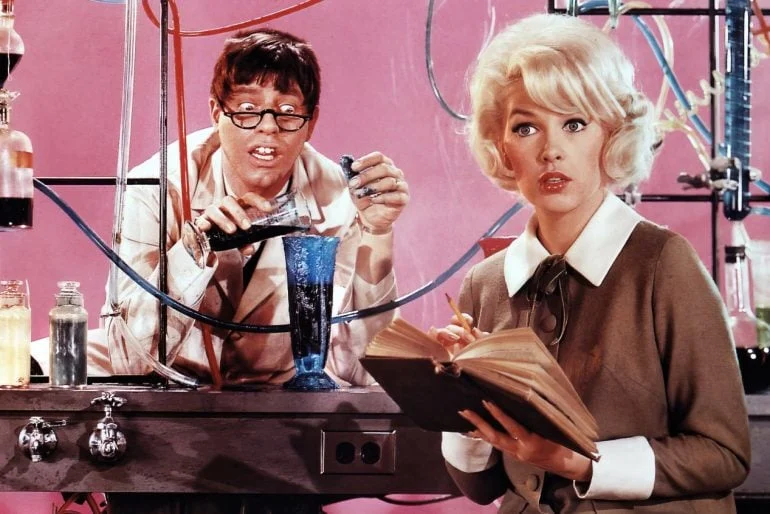
—
The Family Jewels (Paramount, 1965). Hear me out! I’m 10 years old. It’s the first time I’ve ever been left alone at the movies for a Saturday matinee at the Canarsie Theater (Avenue L, between 93rd and 94th Streets in Brooklyn) with friends instead of my very unpleasant older brother. (The young hordes were “chaperoned” by women ushers in white nurses’ uniforms with flashlights called “matrons.” And our parents just left us there with these strangers. No kidding. Anyway…) I had my ice-cold Coke and my bars of Hersey’s chocolate and Bonomo’s (banana or vanilla) Turkish Taffy (it was a double feature, along with a short, cartoons, and coming attractions so a kid had to stay fortified with sugar), and there was Jerry playing seven different parts, from the relatively straight, faithful family chauffeur Willard Woodward to the Saturday morning cartoonish gangster, Bugsy Peyton. If a 10-year-old in 1965 was looking for a definition of “tour de force performance,” they wouldn’t have needed to look any farther.
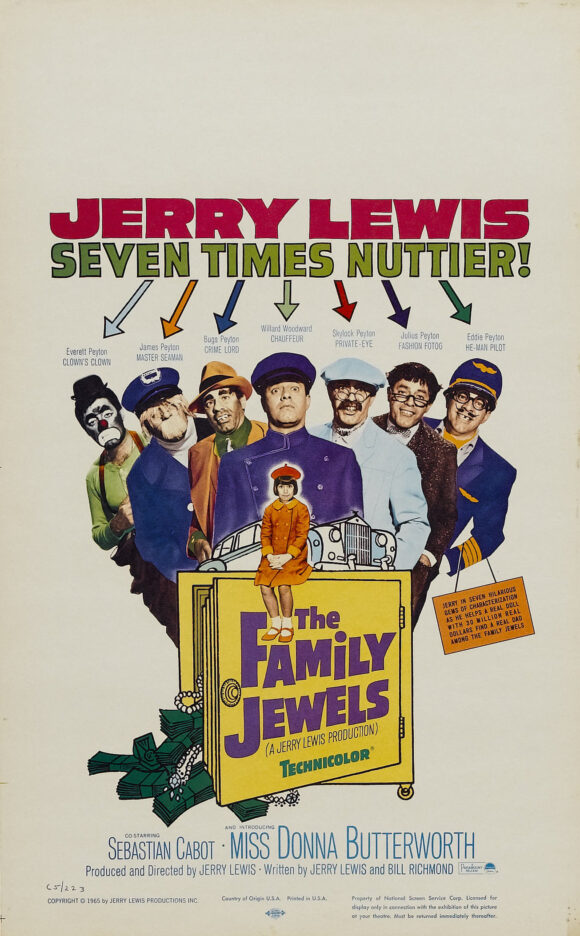
—
Boeing, Boeing (Paramount, 1965). One of Jerry’s “grown-up” movies, it’s an adult farce based on a play and billed as “The Big Comedy of Nineteen-Sexty-Sex!” Of course, since most movies in 1965 settled in at somewhere between today’s “PG” and “PG-13,” Boeing, Boeing is more suggestive than sexy and not even very much of that, wink wink, nudge nudge, know what I mean? Thelma Ritter is featured as Jerry’s snarky housekeeper, and it’s a nice, more restrained performance by Jerry himself. It was also interesting to see him share the screen with co-star Tony Curtis, the first star of equal magnitude he’d been in a film with since splitting with Dean.

—
The King of Comedy (20th Century Fox, 1982). Scorsese. DeNiro. Jerry!?! Just… yeah.
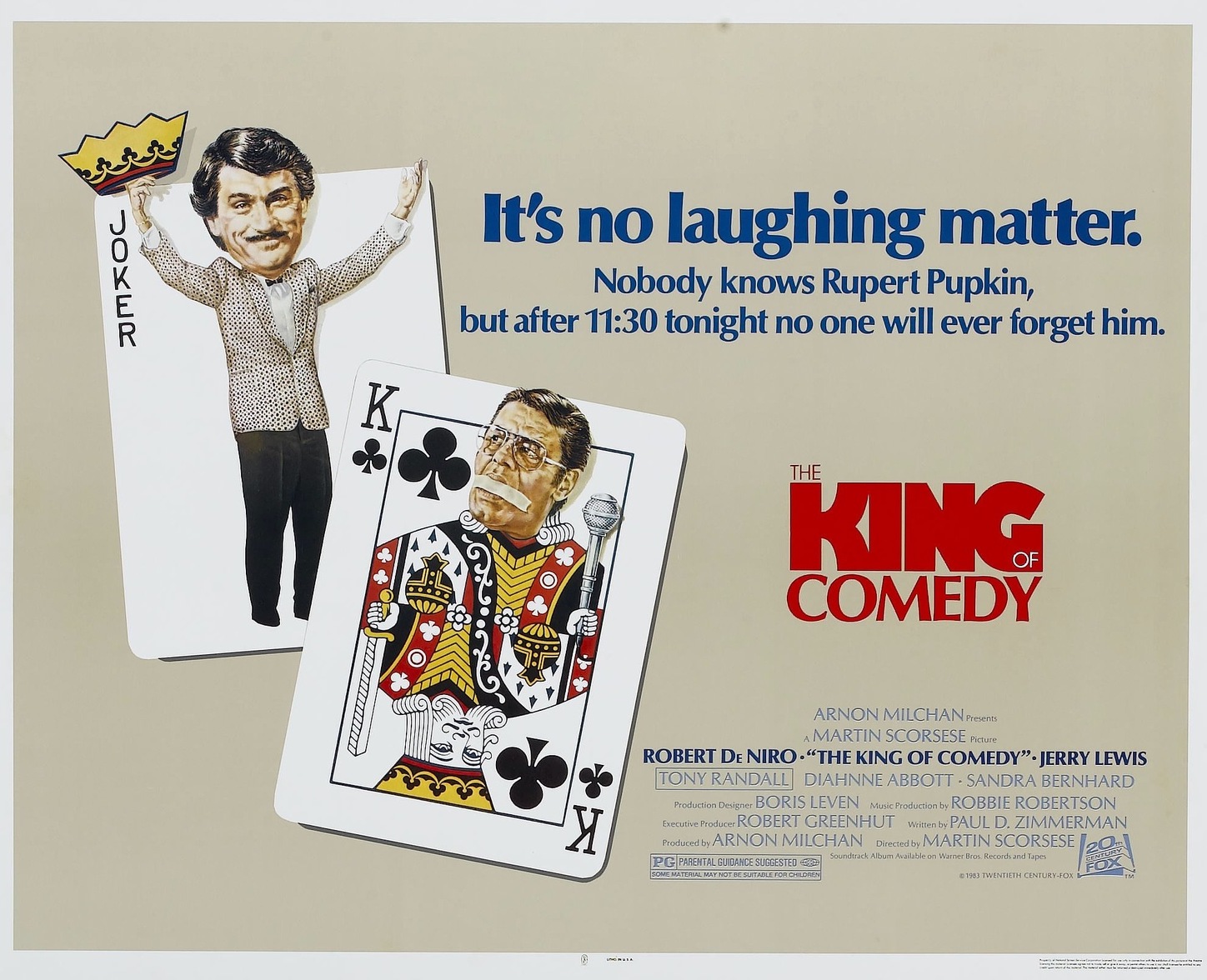
—
Wiseguy (CBS, 1988). I know it says these are my 13 favorite Jerry Lewis movies but I’m going to cheat and slip in a TV appearance: Jerry’s seven-character stretch in The Family Jewels may have been a 10-year old’s idea of a tour de force, but his turn as Eli Sternberg, a garment center business owner caught between the mob, his son, and a hard place in the Season 2 story arc “Seventh Avenue Freezeout” on CBS’ Wiseguy was, like several of his performances in the preceding decade, strictly for adults.
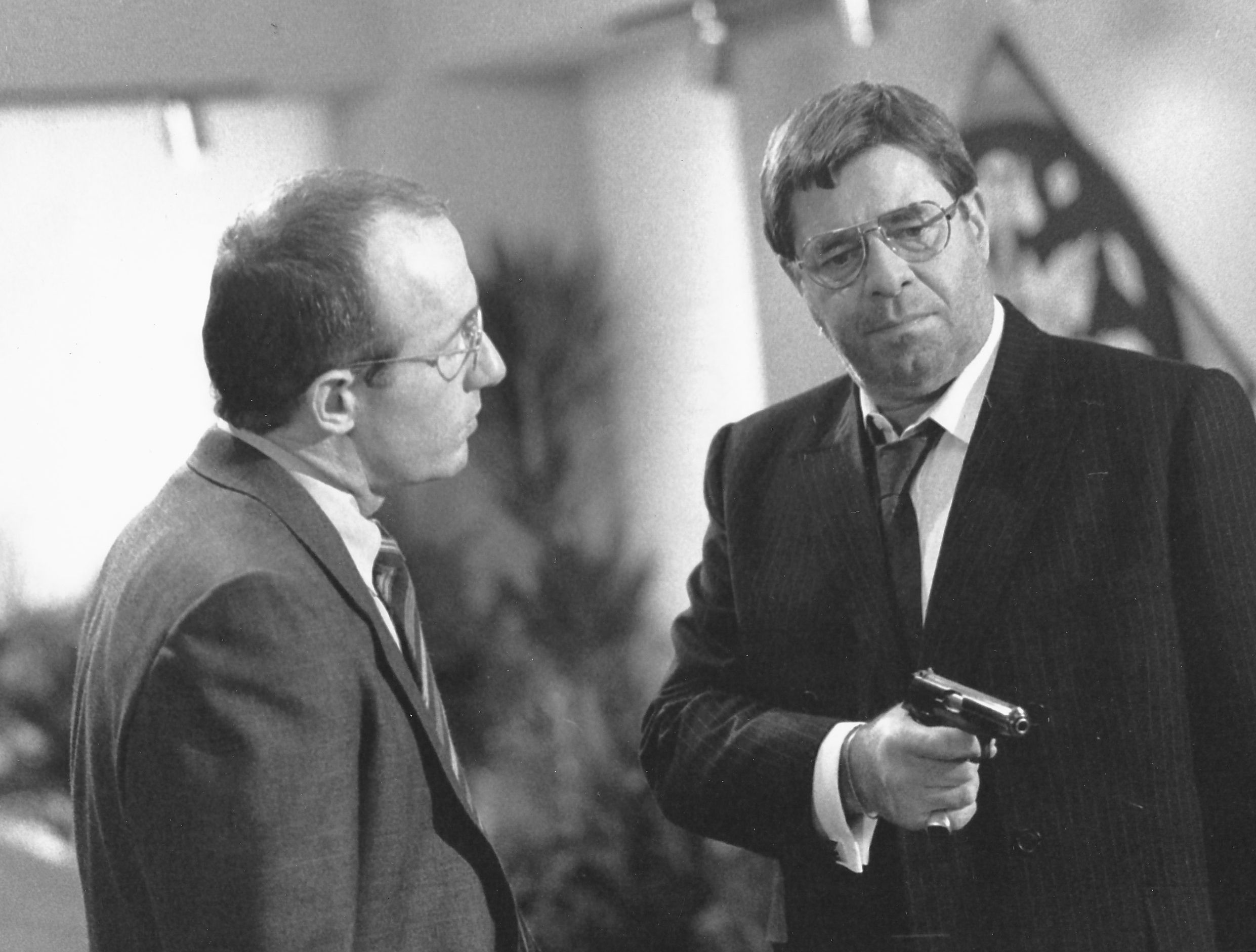
—
Funny Bones (Buena Vista Pictures, 1995). It’s not an easy movie to describe, but Funny Bones is one of those little films that slid under the radar in the US but made it into the Top 10 in its native UK. It’s mostly Oliver Platt and Lee Evans’ movie, set in a world of British comedy performers in Blackpool, but Jerry steamrolls into it as the stern George Fawkes (Platt’s father and a comedy legend), and heartwarming hijinks ensue.

—
MORE
— PAUL KUPPERBERG: My 13 Favorite JERRY LEWIS COMIC BOOK APPEARANCES. Click here.
— HERO-A-GO-GO! When BATMAN Met JERRY LEWIS. Click here.
—
PAUL KUPPERBERG was a Silver Age fan who grew up to become a Bronze Age comic book creator, writer of Superman, the Doom Patrol, and Green Lantern, creator of Arion Lord of Atlantis, Checkmate, and Takion, and slayer of Aquababy, Archie, and Vigilante. He is the Harvey and Eisner Award nominated writer of Archie Comics’ Life with Archie, and his YA novel Kevin was nominated for a GLAAD media award and won a Scribe Award from the IAMTW. Now, as a Post-Modern Age gray eminence, Paul spends a lot of time looking back in his columns for 13th Dimension and in books such as Direct Conversations: Talks with Fellow DC Comics Bronze Age Creators and Direct Comments: Comic Book Creators in Their own Words, available, along with a whole bunch of other books he’s written, by clicking the links below.
Website: https://www.paulkupperberg.net/
Shop: https://www.paulkupperberg.net/shop-1
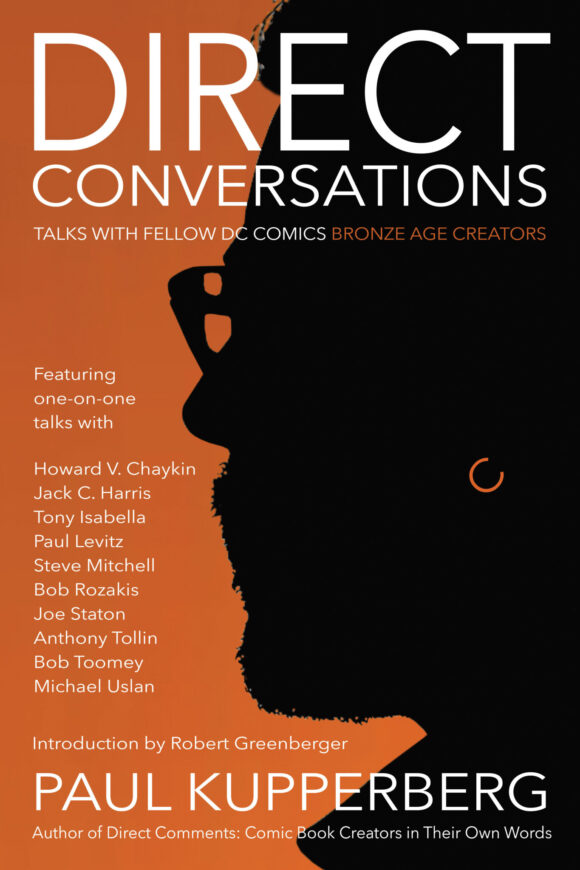

March 16, 2023
I was a huge fan of “Wiseguy” and the arc featuring Jerry Lewis was definitely a series high point.
March 16, 2023
Artists & Models was maybe both the dopiest & best portrayal of the comics business ever on film. A film that’s both great & agonizing stupid, depending on what moment you land on, & probably the best portrayal of the anti-comics fad of the ’50s in pop culture. (Not that there’s immense competition for the title.) Worth watching at least once, at any rate.
March 17, 2023
I saw his stage act back in the day at the Fox Theatre in Detroit. You couldn’t start the fall and back to school without first watching the telethon. I also enjoyed his movies.